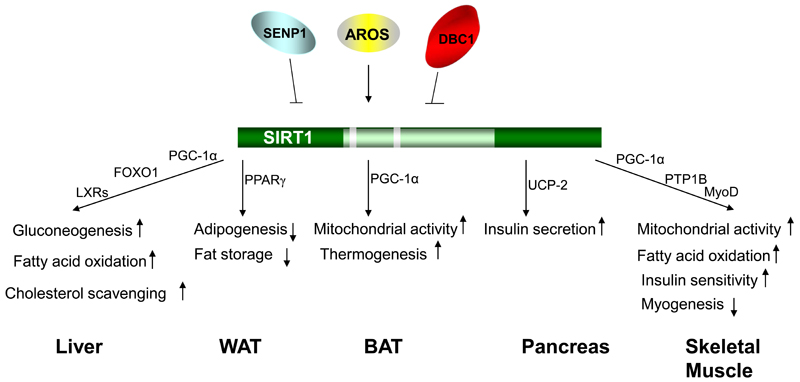Figure 1.
The diverse functions of SIRT1 in different metabolic tissues. SIRT1 promotes gluconeogenesis through PGC-1α and possibly FOXO1 in the liver upon fasting. SIRT1 also facilitates fatty acid oxidation through PGC-1α and cholesterol scavenging through LXRs in the liver. In WAT, SIRT1 inhibits the adipogenesis process and blocks fat storage mainly by serving as a corepressor of PPARγ. In BAT, SIRT1 increases the mitochondrial activity in cells and improves the thermogenic capacity of BAT in a PGC-1α-dependent manner. SIRT1 also functions as the corepressor of PPARγ on the promoter of UCP-2 gene in the pancreas. Inhibition of UCP-2 protein expression enhances ATP production and subsequent insulin secretion in β cells. SIRT1 blocks myogenesis partially through reducing MyoD activity. In the mature skeletal muscle, SIRT1 activation leads to an increase in mitochondrial activity, fatty acid oxidation, and insulin sensitivity. SIRT1 activity itself is regulated by multiple modulator proteins. The nuclear protein AROS is suggested to promote the deacetylase activity of SIRT1, whereas another SIRT1-interacting protein DBC1 inhibits SIRT1 activity. The desumoylase SENP1 desumoylates and subsequent inactivates SIRT1.

